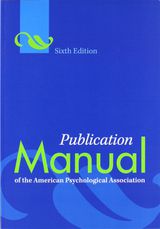When to use et al. in APA

et al., the Latin phrase you did not know you needed, until you used it. What is the right way of using it though? Where, and when can you use it? Can you include it in a sentence? If these questions have crossed your mind, keep reading. We will clear any doubts regarding the uses of et al.
Function of et al.
Et al. translates to “and others,” and it’s mainly used in the academic world to shorten citations. Et al. is used to make simpler in-text citations of sources with multiple authors. This phrase replaces long lists of authors, and makes everyone's life easier.
When to use et al.
The general use of et al. is to shorten in-text citations with multiple authors. However, there are some general rules to follow regarding when and how to use this phrase. Follow the rules to below to use et al. correctly, in APA style:
Three, four or five authors
- First in-text citation: (Kuever, Rainey, & Widdel, 2005)
- Following in-text citation: (Kuever et al. 2005)
Six or more authors
- First in-text citation: (Baer et al., 2015)
- Following in-text citation: (Baer et al., 2015)
When NOT to use et al.
There are always some exceptions to the rule, and according to APA, there are some cases where et al. should not be used. Sometimes, its use can create ambiguity in citations. The following cases exemplify when et al. should be avoided.
Twin references
When two references with more than 3 authors have the same first author and same year of publication, the use of et al. should be avoided. For example:
- reference 1: Kuever, O., Rainey, H., & Widdel, F. (2005).
- reference 2: Kuever, O., Rainey, H., Baer, M., & Widdel, F. (2005).
Instead of shortening the in-text citation to (Kuever et al., 2005), all names should be included in all in-text citations throughout the paper to avoid confusion. The citations would look like this:
- reference 1: (Kuever, Rainer, & Widdel, 2005)
- reference 2: (Kuever, Rainer, & Baer, 2005)

This citation style guide is based on the official Publication Manual of the American Psychological Association (6th edition).